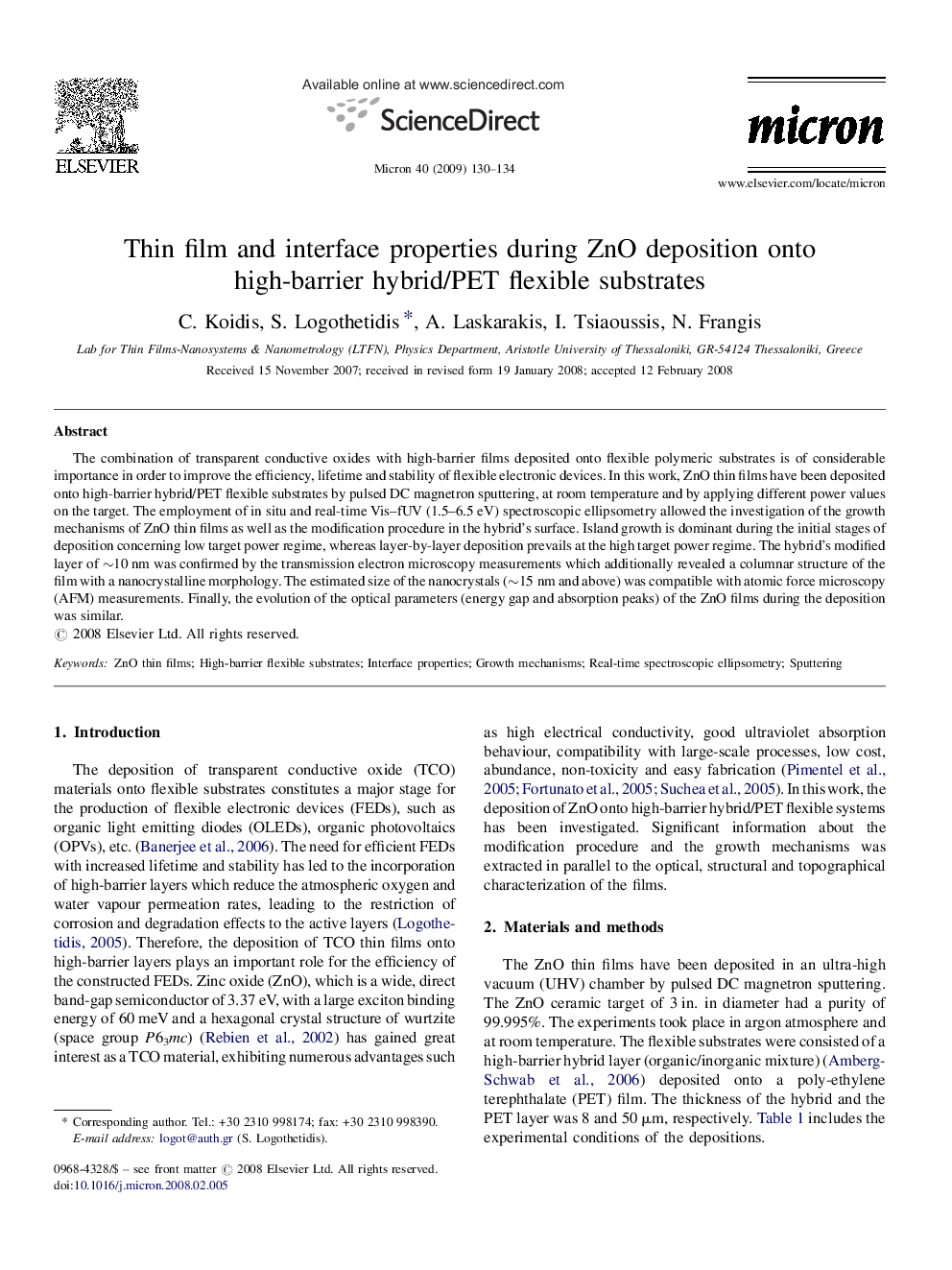| Article ID | Journal | Published Year | Pages | File Type |
|---|---|---|---|---|
| 1589748 | Micron | 2009 | 5 Pages |
Abstract
The combination of transparent conductive oxides with high-barrier films deposited onto flexible polymeric substrates is of considerable importance in order to improve the efficiency, lifetime and stability of flexible electronic devices. In this work, ZnO thin films have been deposited onto high-barrier hybrid/PET flexible substrates by pulsed DC magnetron sputtering, at room temperature and by applying different power values on the target. The employment of in situ and real-time Vis-fUV (1.5-6.5Â eV) spectroscopic ellipsometry allowed the investigation of the growth mechanisms of ZnO thin films as well as the modification procedure in the hybrid's surface. Island growth is dominant during the initial stages of deposition concerning low target power regime, whereas layer-by-layer deposition prevails at the high target power regime. The hybrid's modified layer of â¼10Â nm was confirmed by the transmission electron microscopy measurements which additionally revealed a columnar structure of the film with a nanocrystalline morphology. The estimated size of the nanocrystals (â¼15Â nm and above) was compatible with atomic force microscopy (AFM) measurements. Finally, the evolution of the optical parameters (energy gap and absorption peaks) of the ZnO films during the deposition was similar.
Keywords
Related Topics
Physical Sciences and Engineering
Materials Science
Materials Science (General)
Authors
C. Koidis, S. Logothetidis, A. Laskarakis, I. Tsiaoussis, N. Frangis,
